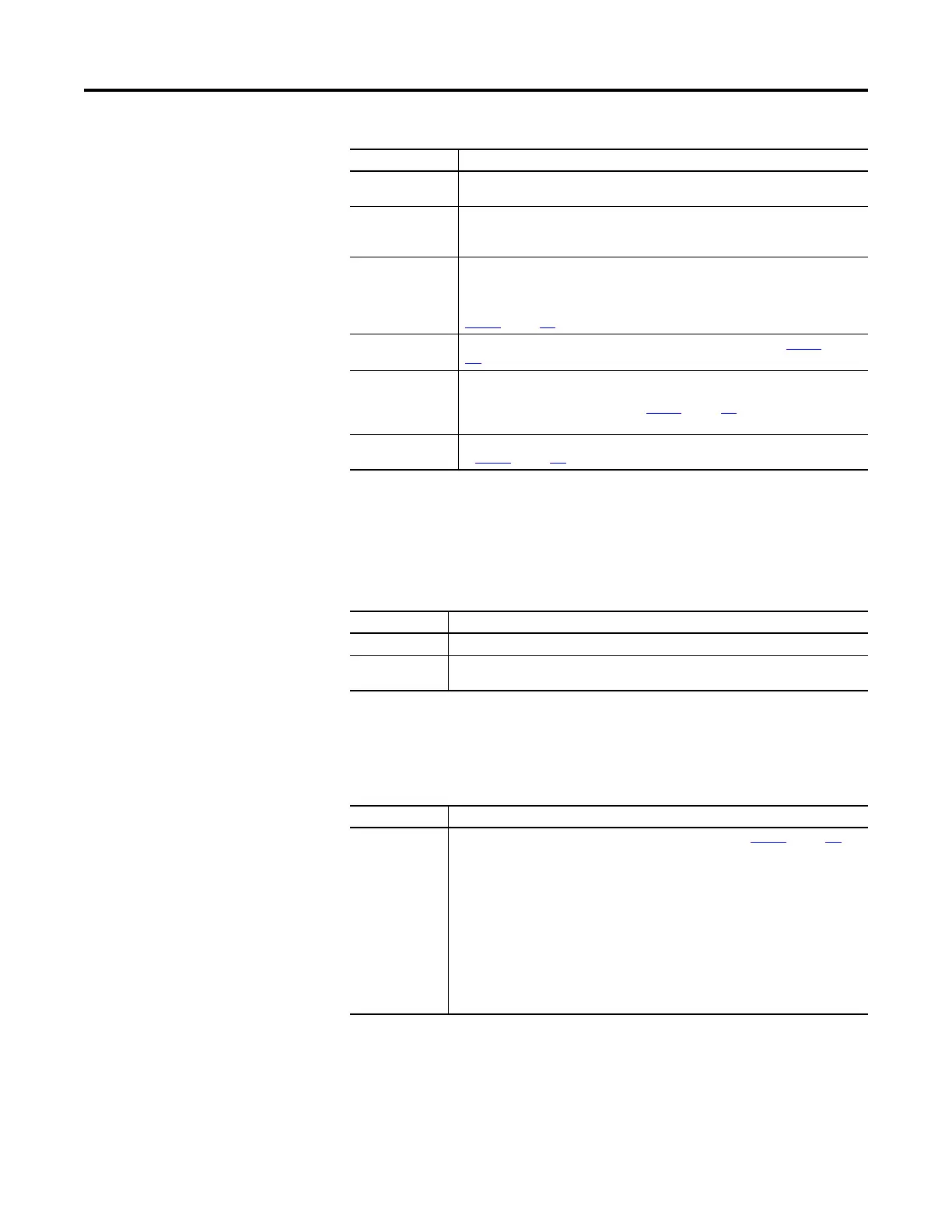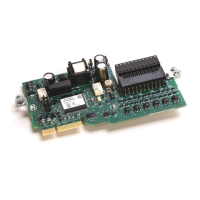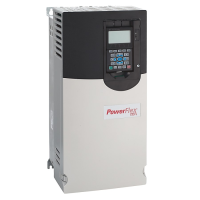302 Rockwell Automation Publication 750-PM001N-EN-P - February 2017
Chapter 6 Troubleshooting
Alarms
An alarm identifies a condition that, if left unaddressed, can stop the drive if
running or prevent the drive from starting. There are two types of alarms.
Configurable Conditions
Configurable conditions can be enabled as an alarm or fault.
Type Description
Major This type of fault in an exception event that stops the drive while the drive is active. The drive
goes to the Not Ready state. No faults can be present for the drive to be in the Ready state.
Minor This type of fault is an exception event that does not stop the drive while the drive is active. To
enable the drive from the Drive Not Ready state to the Ready state, the exception must no
longer be present and the fault must be cleared.
Auto Reset Run When this type of fault occurs, and P348 [Auto Rstrt Tries] is set to a value greater than “0,” a
user-configurable timer, P349 [Auto Rstrt Delay] begins. When the timer reaches zero, the
drive attempts to reset the fault automatically. If the condition that caused the fault is no
longer present, the fault is reset and the drive is restarted. A “Y” in the “Auto Reset” column in
Table 10
on page 309 identifies an “Auto Reset Run” fault.
Resettable This type of fault can be cleared. “Resettable Fault” in the “Type” column in Table 10
on page
309 identifies a Resettable fault.
Non-Resettable This type of fault normally requires drive or motor repair. The cause of the fault must be
corrected before the fault can be cleared. The fault will be reset on power-up after repair.
“Non-Reset Fault” in the “Type” column in Tabl e 10 on page 309 identifies a Non-Resettable
fault.
Automatic Drive Reset When this type of fault occurs, the drive resets. “Automatic Drive Reset” in the “Type” column
in Ta ble 1 0
on page 309 identifies an Automatic Drive Reset fault.
Type Description
Alarm 1 Alarms of type 1 indicate that a condition exists. Type 1 alarms are configurable.
Alarm 2 Alarms of type 2 indicate that a configuration error exists and the drive cannot be started. Type 2
alarms are non-configurable.
Type Description
Configurable The parameter identified in the “Configuration Parameter” column of Table 10
on page 309
enables/disables the event action.
Options
Ignore (0) – No action is taken.
Alarm (1) – Type 1 alarm indicated.
Flt Minor (2) – Minor fault indicated. If running, drive continues to run.
Enable with P950 [Minor Flt Cfg]. If not enabled, acts like a major fault.
FltCoastStop (3) – Major fault indicated. Coast to Stop.
Flt RampStop (4) – Major fault indicated. Ramp to Stop.
Flt CL Stop (5) – Major fault indicated. Current Limit Stop.
FltNonRest (6) – Major fault indicated. Cycle power to clear the fault.
